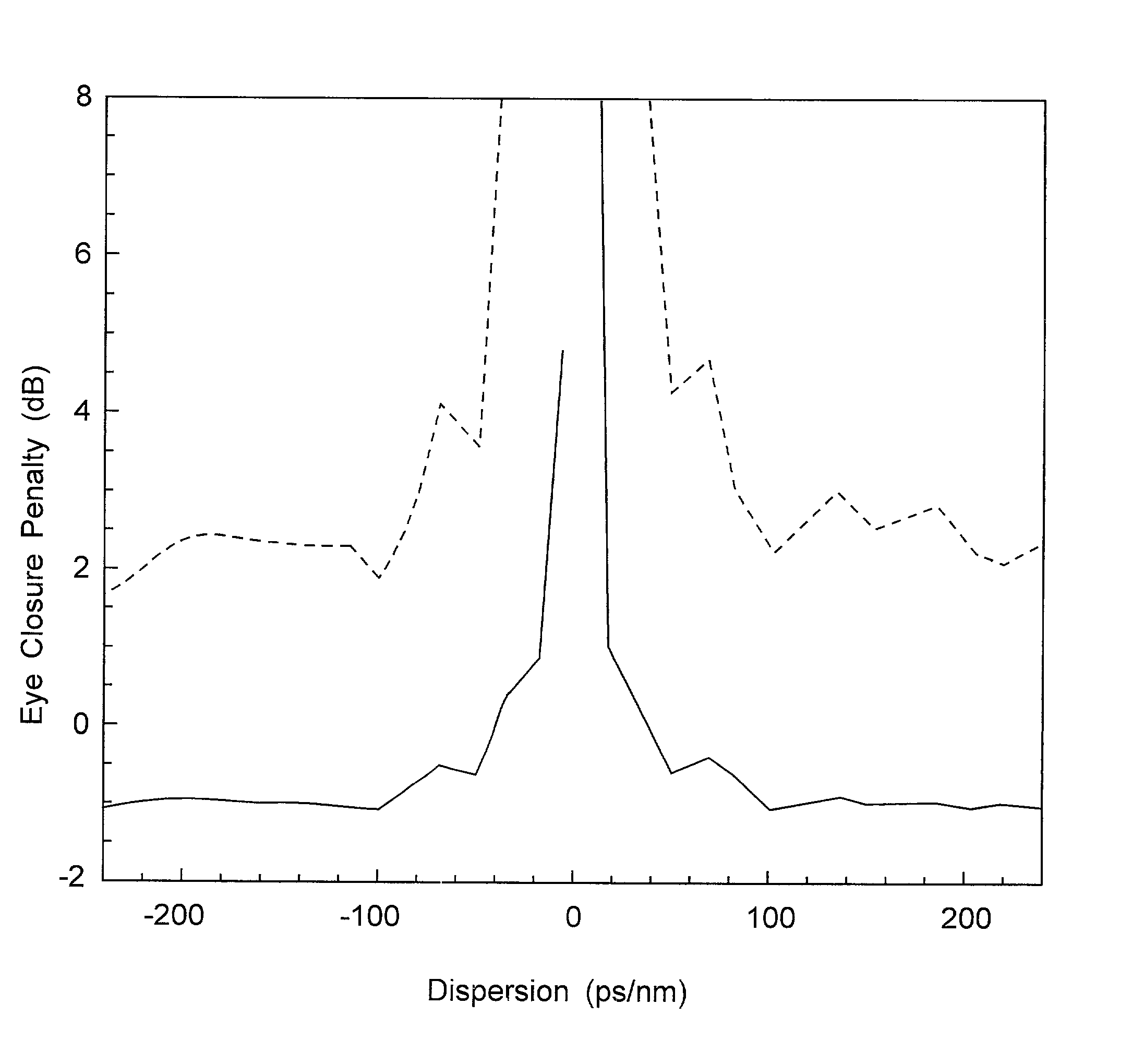High-dispersion fibers for high-speed transmission
a high-dispersion fiber and high-speed technology, applied in multiplex communication, cladded optical fibers, instruments, etc., can solve the problems that the use of fibers with dispersion values of more than 20 ps/(nm-km) would not be considered suitable for high-speed systems based on conventional design principles, and achieves improved system performance, lower distortion of fibers, and higher dispersion values.
- Summary
- Abstract
- Description
- Claims
- Application Information
AI Technical Summary
Benefits of technology
Problems solved by technology
Method used
Image
Examples
Embodiment Construction
[0028] To demonstrate the principles of the invention, simulated measurements were made of pulse transmission in fibers with a number of different dispersion values. These provided plot points that are plotted in FIG. 1. The characteristic measured was the eye closure penalty in dB, a standard indicator of the pulse degradation due to non-linear and dispersion effects in the fiber. The fiber length used was 80 km, the wavelength was 1.55 .mu.m, and the bit rate was 160 Gb / s. Data was generated for two duty cycles, 20% and 33%. Data for the 20% duty cycle is represented by the solid curve and data for the 33% duty cycle is represented by the dashed curve. The corresponding pulse duration was 1.25 ps and 2.1 ps respectively. These pulse durations are low in comparison to those recommended above, and reflect the change in pulse specifications as the bit rate increases by 4.times.. However, the duty cycles of 20% and 33% are typical for PLMT. Results for a 40 Gb / s system operating with ...
PUM
 Login to View More
Login to View More Abstract
Description
Claims
Application Information
 Login to View More
Login to View More - R&D
- Intellectual Property
- Life Sciences
- Materials
- Tech Scout
- Unparalleled Data Quality
- Higher Quality Content
- 60% Fewer Hallucinations
Browse by: Latest US Patents, China's latest patents, Technical Efficacy Thesaurus, Application Domain, Technology Topic, Popular Technical Reports.
© 2025 PatSnap. All rights reserved.Legal|Privacy policy|Modern Slavery Act Transparency Statement|Sitemap|About US| Contact US: help@patsnap.com



